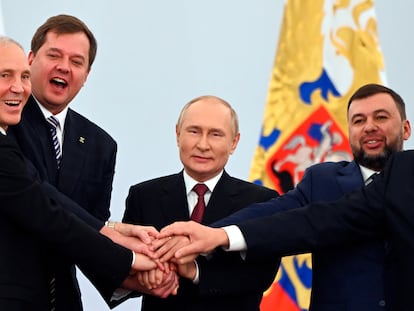The Ukraine war in maps | Russian army bombs Kyiv for the first time in four months
The attack on the Ukrainian capital took place after an explosion partially destroyed the bridge connecting Russia to the annexed Crimean peninsula
The Russian army on Monday attacked the capital of Ukraine, Kyiv, where missiles have killed at least five people and wounded a dozen more, according to the police. The projectiles hit the city center and the headquarters of the Ministry of Education, among other targets. The attack on the Ukrainian capital, the first in the city since June, took place a day after Moscow accused Ukraine of causing the explosion on Saturday that partially destroyed the Kerch bridge, the only road link between Russia and the annexed peninsula of Crimea.
Ukrainian President Volodymir Zelenskiy on Monday accused Moscow of wishing to sow “chaos and panic” by targeting civilian facilities. On the messaging service Telegram, he said Russia “wants to erase Ukraine from the map.” Russian President Vladimir Putin responded during a meeting of the Kremlin’s security council that further attacks would be launched if any other infrastructure or installations on what Moscow considers Russian soil are targeted by Kiev.
Zelenskiy also announced that he had been in contact with German Chancellor Olaf Scholz and French President Emmanuel Macron in the aftermath of the attacks, with the three heads of state agreeing on the need to convene an emergency meeting of the G7, which is slated to take place as early as Tuesday. “I have agreed with Chancellor Scholz, who holds the presidency of the G7, on an urgent meeting of the group,” Zelenskiy wrote.


Meanwhile, Belarus President Alexander Lukashenko has accused Kyiv of preparing an “attack” against his country and announced the formation of a joint military group with Russia in response to an “escalation of tensions” on the borders with the West. Zelenskiy said on Telegram that 83 missiles also fell in 12 other regions, including Kharkiv, Lviv, Dnipro, Sumy and Zaporizhzhia. This latter city has been under constant attacks in recent weeks: at least 13 people died on Sunday in a bomb attack against a residential area, and 20 more the previous Thursday. In late September, 30 people died in an attack against a caravan of civilian evacuees in areas occupied by the Kremlin. By midday on Monday, when air raid sirens were still sounding over Kyiv, the death toll in the latest attacks on Ukrainian civilian targets had risen to 11, with 64 people wounded.
These attacks can be viewed as the Kremlin’s response to its most critical moment since it launched the military campaign last February. For the past month, Russian troops have been withdrawing on the southern and eastern fronts as Ukrainian forces push forward. Moscow has been forced in recent weeks to mobilize tens of thousands of reservists to stop the successful counter-offensive by Kiev. Over the past month, the Ukrainian army has regained control of large tracts of land in the eastern and southern parts of the country. In the east, Russian defensive lines occupying large parts of the Kharkiv region collapsed in September, leaving even Lyman, a railway junction essential to the occupation, in Ukrainian hands. The front line is now close to the administrative border of Luhansk, one of the two separatist regions that form the Donbas region.
Another region where Kremlin troops have suffered a setback at the hands of the defenders is Kherson, under Moscow’s control since the beginning of the invasion and one of the four regions illegally annexed by Putin recently. The Ukrainians managed to penetrate the Kremlin’s defense lines in the direction of the Dnieper River in early October, and forced the invading forces to retreat.
Previous days | October 3
In the past two days, the Ukrainian army regained control over large tracts of land in the east and south of the country. The advance of Kyiv’s troops was documented both around the eastern city of Lyman, a crucial railway junction for the Russian occupation, and in the southern region of Kherson.
In Lyman, Ukrainian forces continued to advance eastwards towards the border of Luhansk, one of the four provinces illegally annexed last week by Russia, according to the Institute for the Study of War (ISW). Russian troops withdrew from Lyman over the weekend after being encircled by Ukrainian forces. Based on geo-referenced images, it can be inferred that Ukrainian soldiers are heading towards the town of Kreminna.
According to the ISW, the Russian troops deployed in Lyman were largely made up of what were considered elite units of the Russian army prior to the start of the war. Their apparent inability to hold defensive lines in the face of Ukraine’s forces seems to indicate that even the best-trained units are suffering from war fatigue. Images collected by the ISW show Kyiv forces in at least six towns along the eastern front that were under Russian control.
The ISW believes elite Russian army units were also deployed in Kherson, another area where Ukrainian troops have made gains. The city has been under Moscow’s control since nearly the beginning of the invasion, and was also illegally annexed by Russia last Friday. The Russian Defense Ministry confirmed that Ukrainian forces had broken through the Kremlin’s defensive positions near Dudchany, a town on the Dnieper River, and pushed its troops back to a new line. According to the ISW, Ukrainian sources are keeping quiet about their operations in the area.
October 1
Ukraine recaptured the important hub town of Lyman on Saturday. The town, located about 108 miles (175 km) south of Kharkiv, had been the scene of intense fighting following Ukraine’s counter-offensive, which was launched at the beginning of September.
Losing control of this town is a major blow for Moscow, which on Friday illegally annexed four occupied Ukrainian provinces: Kherson, Donetsk, Luhansk and Zaporizhzhia. Kremlin spokesman Dmitry Peskov said the borders of the territories annexed by Russia had not yet been defined, stating just that the so-called people’s republics of Luhansk and Donetsk proclaimed independence in 2014. For Russia, Lyman’s role as a railway junction has been key in transporting supplies to troops deployed in eastern Ukraine.
By taking control of Lyman, Kyiv has regained an important communications hub, which it can use as a base to launch attacks on Russian-controlled towns in Luhansk.
In the south of the country, in the provinces of Kherson and Zaporizhzhia, the front line remained stable on Saturday, despite constant fighting. In Zaporizhzhia, at least 30 people were killed, and 88 others wounded in a missile attack on a civilian convoy. Kyiv blamed the attack on Moscow, which in turn said Ukraine was at fault. It is the largest single civilian fatality count of the war since the massacre at the Kramatorsk train station in Donetsk on April 8, which left more than 50 people dead.
September 21
Ukraine’s forces on Wednesday continued to attack towns controlled by Russia in eastern Ukraine. The two sides have been fighting for control of territories located on the borders of the eastern regions of Donetsk and Luhansk, where Moscow-backed, pro-Russian separatists declared two independent people’s republics in 2014.
Ukrainian troops have taken control of Bilohorivka, a small town in the Luhansk region, said the Institute for the Study of War (ISW). In response to Ukraine’s successful counteroffensive, which has liberated many cities, Russian President Vladimir Putin on Wednesday announced a partial military mobilization following recent setbacks in his war against Ukraine.
Russian troops on the Donbas front have been trying to secure defensive positions against the Ukrainian advance, and are also maintaining ground attacks, particularly in the cities of Donetsk and Bakhmut, in the Donetsk region.
Fighting has also been taking place is the Kherson region, in the south, which has been under Russian control since the first weeks of the offensive.
September 15
The Ukrainian army has been trying to extend the counteroffensive it launched over a week ago to towns in Donetsk and Luhansk, two regions in the eastern Donbas where pro-Russian separatists, with support from Moscow, proclaimed independent people’s republics in 2014. Oleksii Arestovych, one of President Volodymir Zelenskiy’s advisers, said in a video on Wednesday that Ukrainian troops were trying to retake the Donetsk town of Lyman, about 175 kilometers south of Kharkiv (which was recaptured 10 days ago).
“An assault on Lyman is going on right now,” Arestovych asserted, adding that troops were also trying to reclaim territory in the neighboring Luhansk, both under Russian control. Several military bloggers following the war reported that Russian forces were defending themselves against Ukrainian attacks in Lyman, according to the Institute for the Study of War (ISW).
The successful counteroffensive launched in the northeast of the country in the last week has allowed the Ukrainian army to recapture about 8,500 square kilometers since September 6, according to Kyiv. Troops are still working to consolidate their control over the areas recaptured in the last days in the northeastern province of Kharkiv, according to a UK intelligence report from Thursday.
The ISW considers that the recapture of Izyum, in the Kharkiv region, has dealt a severe blow to Russia’s ability to carry out artillery attacks in the area, as it was being used as a base to hold the line of defense on the Donbas border. This organization believes that Russian forces have been unable to erect a new line of defense from which to hold their positions in the area, and said the remaining units have retreated to other flanks.
The northwest, however, is not the only battle zone. In the southern Kherson region, under Russian control since the beginning of the conflict, fighting has also been raging in recent days. The sustained counteroffensive by Ukrainian forces in Kherson is damaging Russia’s combat capability in the area, the ISW says.
September 12 | Recapturing Kharkiv
The recent counteroffensive launched by Ukraine has forced Russian forces to abandon their positions in the eastern region of Kharkiv, which borders Russia and is the gateway to the coveted Russian-speaking Donbas region. The rapid counteroffensive has inflicted a “major operational defeat on Russia,” according to the Institute for the Study of War (ISW). In the face of the Ukrainian advance, Moscow has ordered its forces to withdraw from the entire Kharkiv region to the east of the Oskil River, according to British intelligence, meaning Russia’s troops have been pushed back to Donbas.
The withdrawal order on the eastern fringe – which represents the biggest withdrawal of Moscow’s troops since the army pulled back from the outskirts of Kyiv – is an unparalleled military success of the Ukrainian counteroffensive. By regaining of control of the key city of Izyum, Ukraine has dealt a severe blow to Moscow’s goal to control Donetsk, one of the two breakaway regions that make up the northern Donbas axis. Russia used Izyum as its westernmost post to launch attacks on Donetsk, according to the ISW. The report from ISW is supported by the latest update of the Russian Defense Ministry’s map of the conflict, which reflects the withdrawal of troops. When Kyiv announced that it was planning operations against Russian forces in Kherson, in the south of the country, Russia moved its troops away from the areas that were hit by the Ukrainian counteroffensive on the weekend.
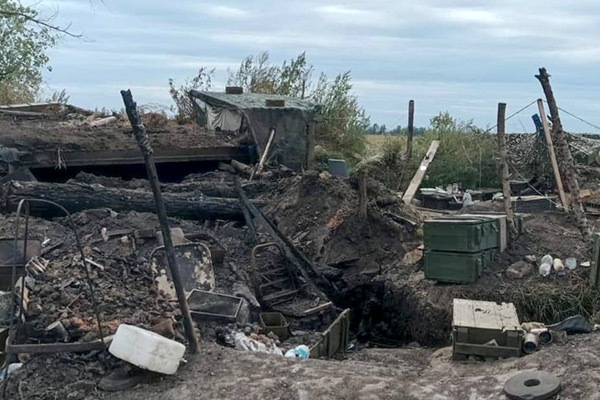
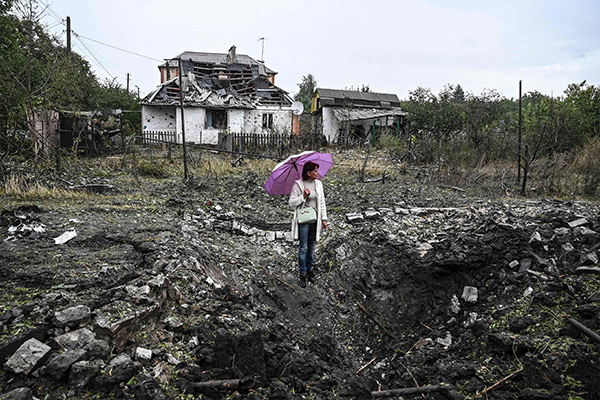
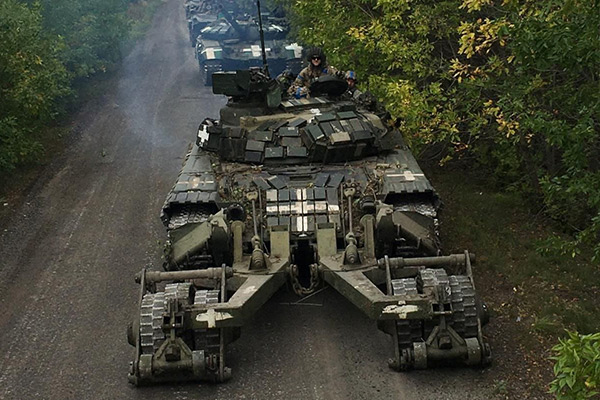
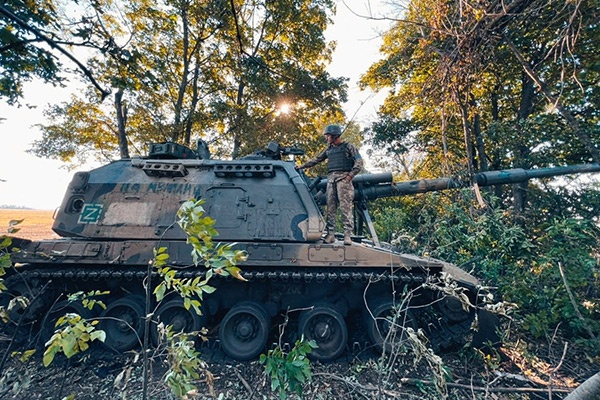
According to the ISW, Russian forces are “not conducting a controlled withdrawal and are hurriedly fleeing southeastern Kharkiv Oblast.” The US organization reported that images shared on social media, showed abandoned tanks and military equipment near Izyum, indicating that the Kremlin’s forces were trying to escape the encirclement of the city.
According to the ISW, the success of Ukraine’s counteroffensive means that Ukraine can choose where the next battles will take place – unless Moscow finds a way to regain the upper hand. The counteroffensive, however, will not end the war, warns the organization, as Russia is likely to build a new defensive line. The ISW report indicates the war in Ukraine is set to last another year.

